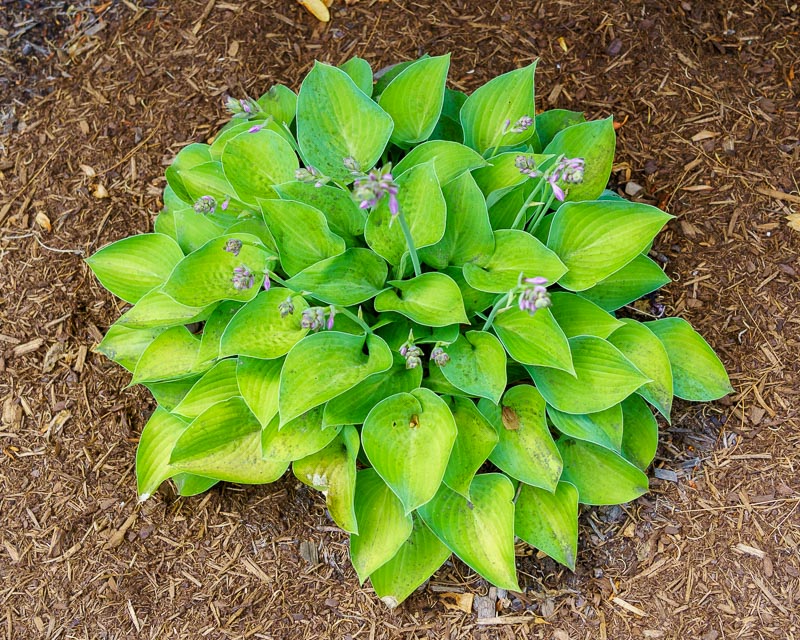| Common Name | Blue Mouse Ears Hosta |
| Botanical Name | Plantain Lily 'Blue Mouse Ears' |
| Mature Size | 6” - 7” tall; 11” - 12” wide |
| Sun Exposure | Partial Sun, Shade |
| Soil Type | Clay, Loam |
| Soil pH | Acid, Alkaline, Neutral |
| Bloom Time | Late spring to early summer |
| Flower Color | Violet |
| Care | An easy to care for perennial, Blue Mouse Ears is going to be happy with an average to fertile soil. A well drained humus rich soil will give you best results. They prefer a pH range of 6.0 to 6.5, slightly acidic to neutral. Full sun will scorch the leaves. These little perennials prefer to be in partial to full shade with a consistently moist soil. Mulch with a good quality pine bark mulch for best moisture retention and water consistently throughout the hottest months of summer if rainfall is inadequate. Hosta will thrive in fertile soils with little to no additional fertilizer, but if soil is particularly poor, add a general purpose fertilizer in the spring to give it a good start and repeat every 4 to 6 weeks as needed. |
| Soil | Hostas are tolerant of most types of soil, provided that the soil is well-drained. But you should not plant hostas in clay soil, which holds too much moisture. They also like their soil to be rich and full of organic matter with an acidic soil pH. For hostas in pots, use a standard commercial potting soil that is well-drained. |
| Water | Water hostas as needed to keep the soil moist but not wet. Once established, hostas will tolerate occasionally dry soil, but they won't survive long periods of drought. Deeper, infrequent watering is better than frequent shallow applications. When growing hostas in pots indoors, maintain a regular watering schedule to keep the soil moist. |
| Temperature and Humidity | Hostas are not fussy about temperature or humidity and can grow in a wide range of climates. It's best to plant them in a location that is protected from strong winds. Normal indoor temperatures are good for hosta plants in pots, provided that they are getting a cool period for winter dormancy. |
| Fertilizer | Proper feeding is one way to make hostas grow bigger. The best and easiest way to feed hostas is by adding a healthy layer of compost to the soil in the spring. This feeds nutrients into the soil and helps promote the soil food web. You can also feed hostas with a well-balanced organic fertilizer, applied after planting or when plants begin to come up in spring. But be careful not to get fertilizer granules trapped in the leaves, which can burn them. |
| Pruning | Some gardeners clip off the flower stalks when they appear, though other growers recognize the value of the white or purple flowers to bees and other pollinators. If you do allow the flowers to bloom, clip off the stalks after the flowers have faded. |
| Overwintering | To care for hostas in the fall, keep watering but pull back on fertilizing. The foliage will naturally start to die back. At that point, it's best to cut the plants to the ground to prevent pests or diseases from infesting the depreciating foliage. Hostas in winter are overall hardy and survive just fine. But in cooler climates, it can help to add a layer of dry mulch over the roots to insulate them. Hostas in pots that will remain outdoors for the winter are best buried in the garden up to the rim of their containers and then covered with mulch. |
| Source | https://www.thespruce.com/how-to-plant-hostas-3963861 |

